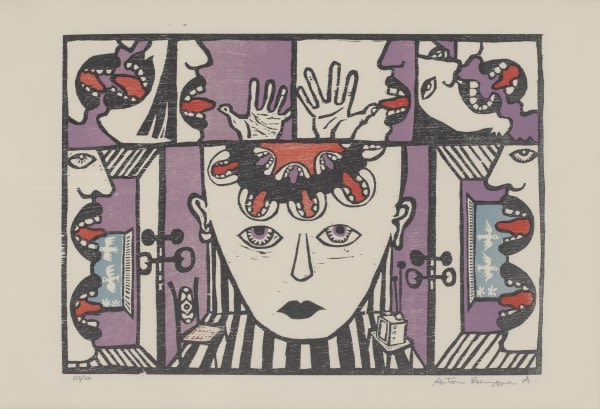Pioneering the study of Art from Latin America

The study of art from Latin America was at the core of the University’s founding vision, which placed Latin American Studies at the centre of our teaching and research.
The Essex Collection of Art from Latin America (ESCALA) was born out of collaboration and partnership. It is this collective strength that has shaped this unique collection and supported teaching and research of art from Latin America in the UK.
Today, ESCALA continues to inspire new artworks and new ways of thinking and brings together our expertise in art, literature, languages, politics, sociology, and economics.

What is ESCALA?
ESCALA is our museum.
It is a collection of more than 800 artworks in a broad range of media, including painting, sculpture, video, and multimedia installations, dating from 1960 to the present.
The earliest objects in the collection were donated by people who owned their own galleries, by artists, collectors and curators, and by Art History students. These included people like Marcos Curi, a pioneering collector of modern and contemporary art and founder and director of the Museum of Contemporary Art in Buenos Aires, and Ofelia Rodríguez, a Colombian artist who pioneered the use of pop art in Latin America.
These early donations reflected the interests of artists from the region at the time. Many used art to defend basic rights and freedoms jeopardised by various Latin American dictatorships. Others turned to art to question and further study the complex legacy of colonialism in the region and their work rescues and rethinks the local artistic traditions of indigenous cultures. More recently, our acquisitions have been informed by students’ and lecturers’ research interests, particularly in the environmental challenges facing us today and how artists from the region are responding to them.
The collection, which is based at our Colchester Campus, also includes our Teaching and Research space in the Constable Building, a public display of artworks in the ESCALA Gallery within our Silberrad Student Centre, as well as an online catalogue, a Documentation Centre and library of approximately 4,500 archival items. Our Albert Sloman Library also holds the national collection of 10,000 Latin American art books.
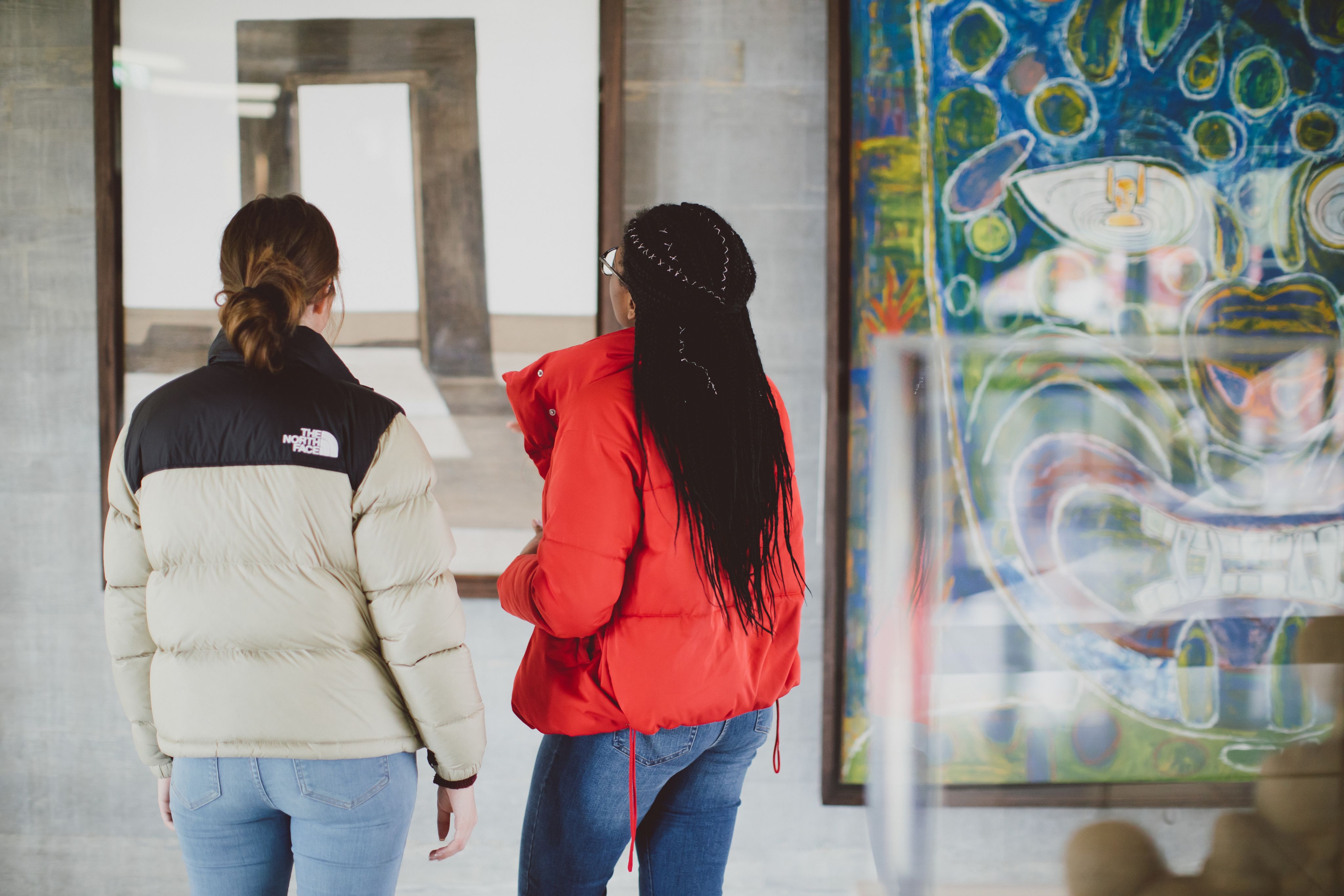
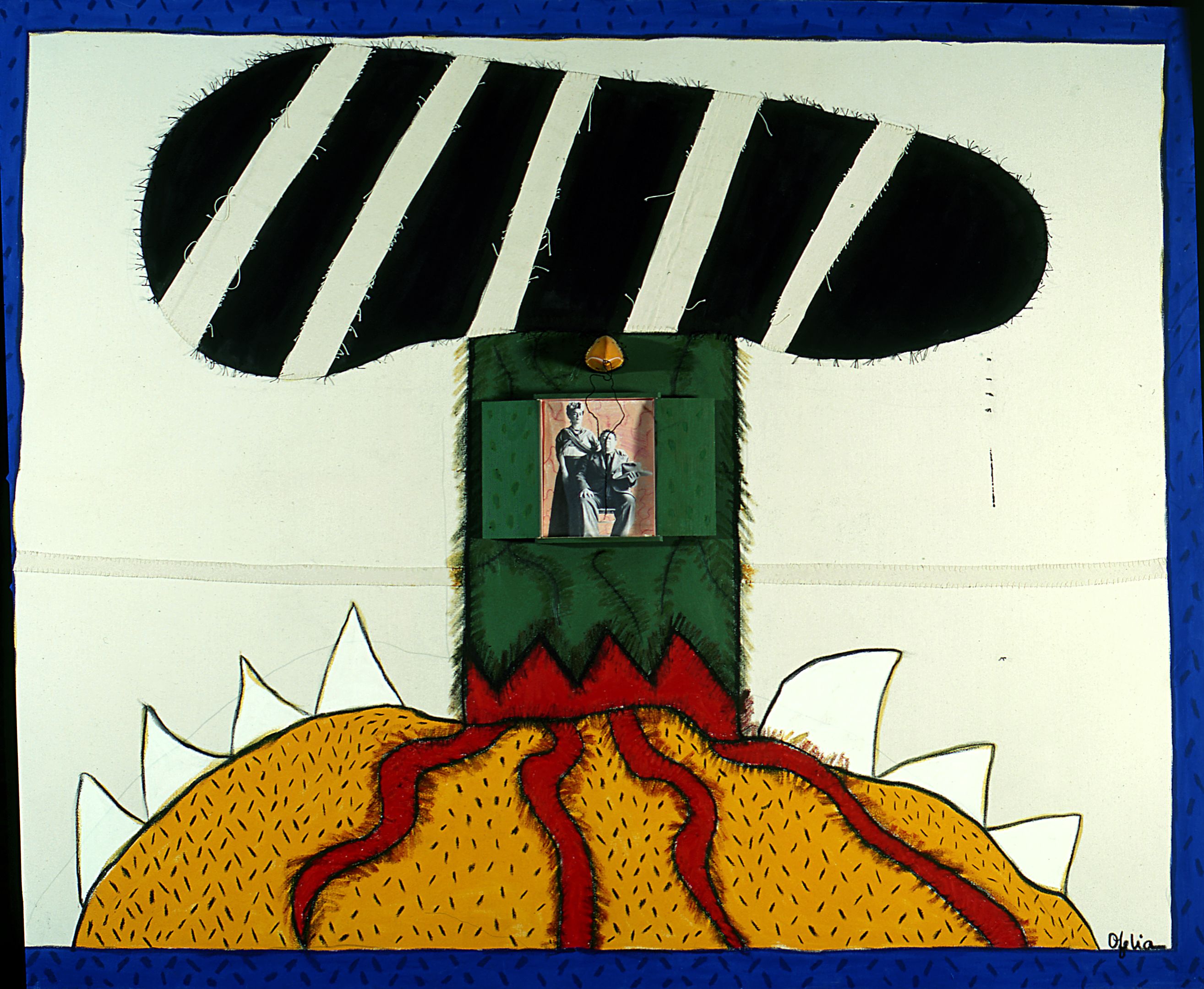

Together these combined resources make the University of Essex one of the most complete resources for art from Latin America in the UK. Our Collection includes works like Marcelo Brodsky’s gut-wrenching class photo de Buena Memoria, 1er a er año, 6ta division, foto de clase, 1967 which documents, through annotations in coloured pencils, the fate of the artist’s primary school classmates under the military dictatorship in Argentina which disappeared 98 alumni from his school.
We also house the richly colourful mixed-media oil paintings of Ofelia Rodríguez which celebrate and scrutinize the cultural identity of Colombia, and Antonio Henrique Amaral’s series of seven woodcuts O meu e o seu, which satirize through exaggerated graphics the physical and psychological violence of the military dictatorship in Brazil.
O meu e o seu: impressões de nosso tempo
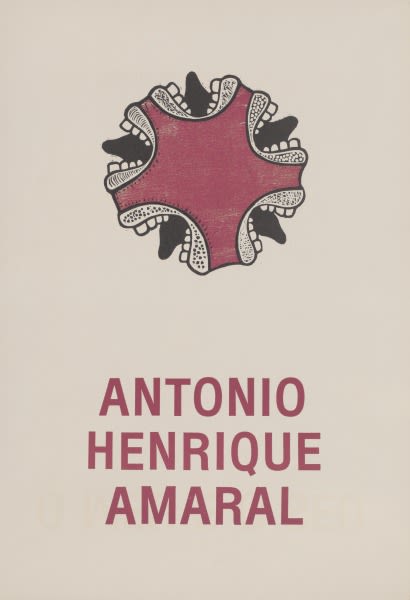
O meu e o seu: impressões de nosso tempo by Antonio Henrique Amaral.
O meu e o seu: impressões de nosso tempo by Antonio Henrique Amaral.
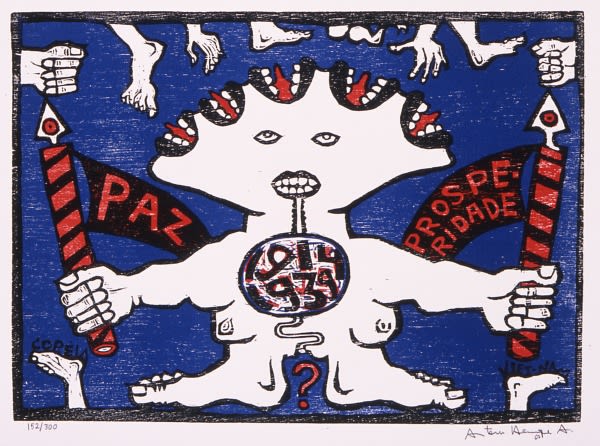
Personagem contemporaneo O meu e o seu: impressões de nosso tempo by Antonio Henrique Amaral.
Personagem contemporaneo O meu e o seu: impressões de nosso tempo by Antonio Henrique Amaral.
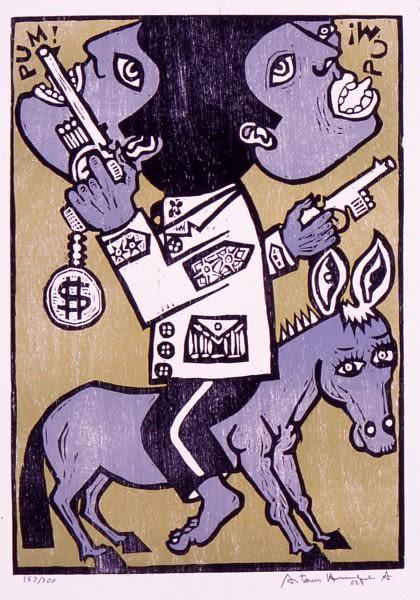
Passatempo seculo XX O meu e o seu: impressões de nosso tempo by Antonio Henrique Amaral.
Passatempo seculo XX O meu e o seu: impressões de nosso tempo by Antonio Henrique Amaral.
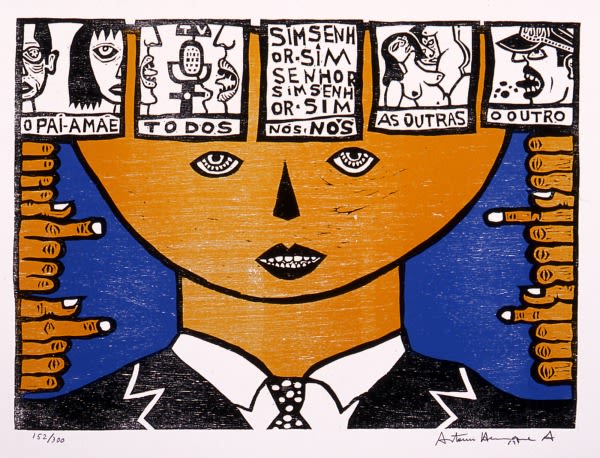
Realidades, culpas? O meu e o seu: impressões de nosso tempo by Antonio Henrique Amaral.
Realidades, culpas? O meu e o seu: impressões de nosso tempo by Antonio Henrique Amaral.
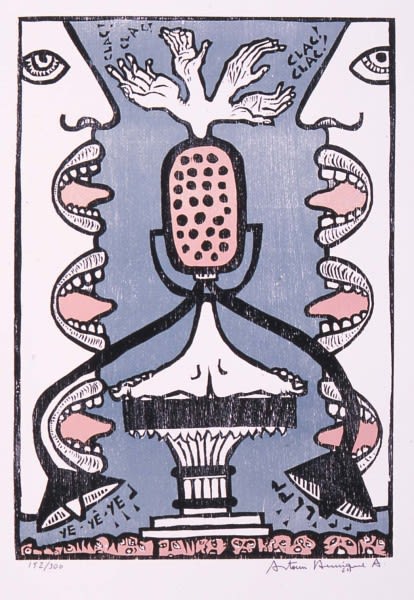
O Idolatrado O meu e o seu: impressões de nosso tempo by Antonio Henrique Amaral.
O Idolatrado O meu e o seu: impressões de nosso tempo by Antonio Henrique Amaral.
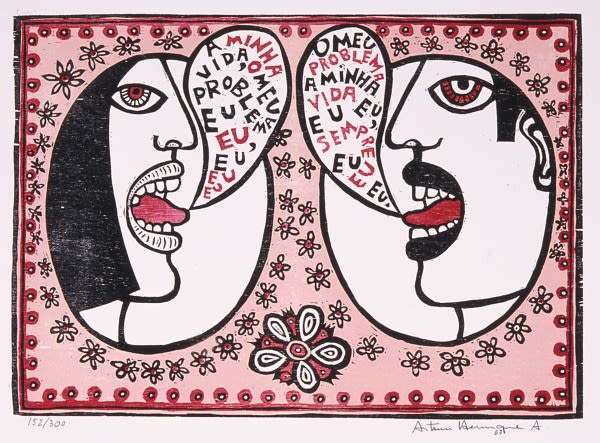
um + um = dois? O meu e o seu: impressões de nosso tempo by Antonio Henrique Amaral.
um + um = dois? O meu e o seu: impressões de nosso tempo by Antonio Henrique Amaral.
“Someone, someday, could write a short story about the origins of the Collection. It all began with a single donation.”
Professor Valerie Fraser
Founding ESCALA
The study of art from Latin America was at the core of the University’s founding vision, which placed Latin American Studies at the centre of our teaching and research. Our first Vice-Chancellor, Sir Albert Sloman, promoted a culture of international awareness and promoted various links between Britain and Latin America. Early lecturers were encouraged to develop courses which focused on the region for the School of Comparative Studies.
In 1971, encouraged by Sloman’s vision, Professor Dawn Ades developed a unique module dedicated to the study of pre-Columbian, colonial, and modern art from Latin America. Essex’s founding interest in the region attracted students like Professor Valerie Fraser, who specialised in art and architecture from Latin America. Together, Professor Ades and Professor Fraser laid the building blocks for Essex to become a hub for scholars and students dedicated to the study of Art from Latin America. Their extensive knowledge of art from the region and their close ties with various collectors, scholars, and curators contributed to various exhibitions. These included Huacos: Ancient Peruvian Pottery, curated by Professor Valerie Fraser, which was the inaugural exhibition at our own art gallery, and Art in Latin America: The Modern Era, 1820–1980 at the Hayward Gallery in London, which was curated by Professor Dawn Ades.

In 1993, Charles Cosac, one of our MA Art History students, donated an artwork called Memória, by the Brazilian artist Siron Franco. The large painting depicts traces of fur patches, forest cats and abstract depictions of rubble under layers of silver paint and represent Franco’s concerns with the local trade in ocelot furs and the illegal dumping of radioactive Cesium-137 in Goiânia, a city in Brazil, where Franco had grown up.
Following Cosac’s generous donation, Professors Ades and Professor Fraser seized the opportunity to develop ESCALA, which was founded by staff and students in 1993. The first exhibition featuring material and art from the collection explored the theme of geometric abstraction in Latin America and was curated by the internationally acclaimed founding Curator and Essex alumnus, Dr Gabriel Pérez-Barreiro. He would later become Curator of leading institutions in the study of art from the region, such as the Blanton Museum of Art, the University of Texas at Austin, The Americas Society in New York and the Patricia Phelps de Cisneros Collection in New York and Caracas.
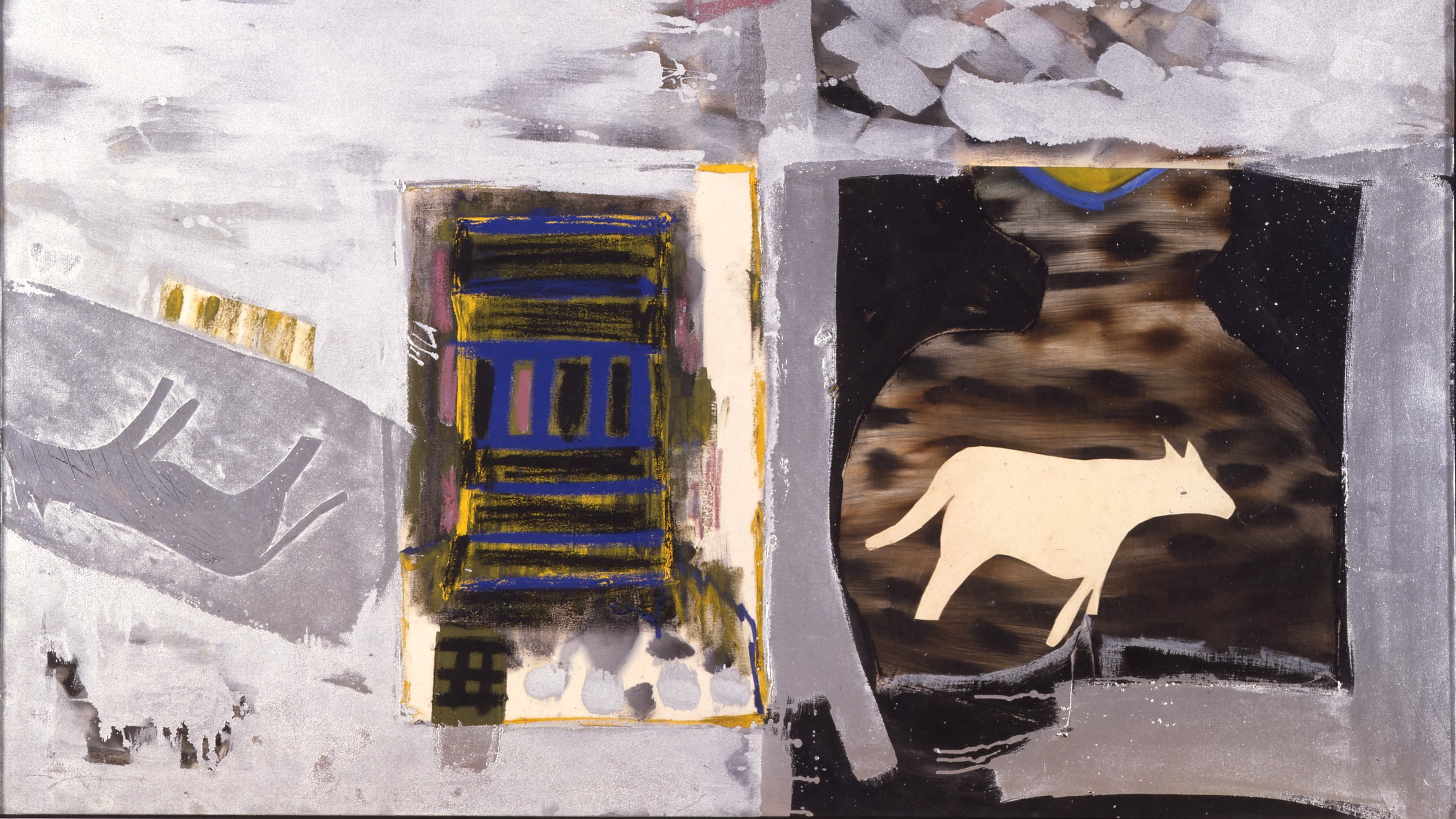
Trinta/Treinta/Thirty years of ESCALA
Our most recent exhibition, Trinta/Treinta/Thirty, commemorated ESCALA’s 30th anniversary by celebrating the different voices which have nurtured and promoted the growth of the collection.
ESCALA thrives due to the continual support of students, staff, and alumni from the University of Essex, as well as Latin American artists and a wider community from across the world. That’s why our curators invited collaborators and friends of the collection to select the artworks that made up Trinta/Treinta/Thirty. Their choices not only showcased the full range of the collection, but also reflected ESCALA’S interest in human rights, the environment, indigenous America, pop art, and political activism.
The exhibition also imagined ESCALA’s future by commissioning Rebeca Romero, a London-based Peruvian artist, to develop a new artwork responding to the collection and its desire to look to the future whilst also celebrating the past. Rebeca’s work borrows ideas from an armillary sphere, a mathematical instrument designed to represent celestial movements, and imagery inspired by the cosmology of the ancient American culture of Chavín, an extinct civilization from the north Andean region of what is now part of Peru.
Chavín people saw the world as divided in three, the upper world represented by the eagle, the middle world represented by the jaguar, and the underworld represented by the serpent. To create Axis Mundi, Romero collaborated with AI technology and used biodegradable materials. The result is a new artifact which thinks of a future where objects serve as technologies to find universes within ourselves and acts as a magical portal to alternative futures where ancient American ideas about the origin of the universe are still important to understanding the world anew.

Take a virtual tour of
Trinta/Treinta/Thirty years of the Essex Collection of Art from Latin America
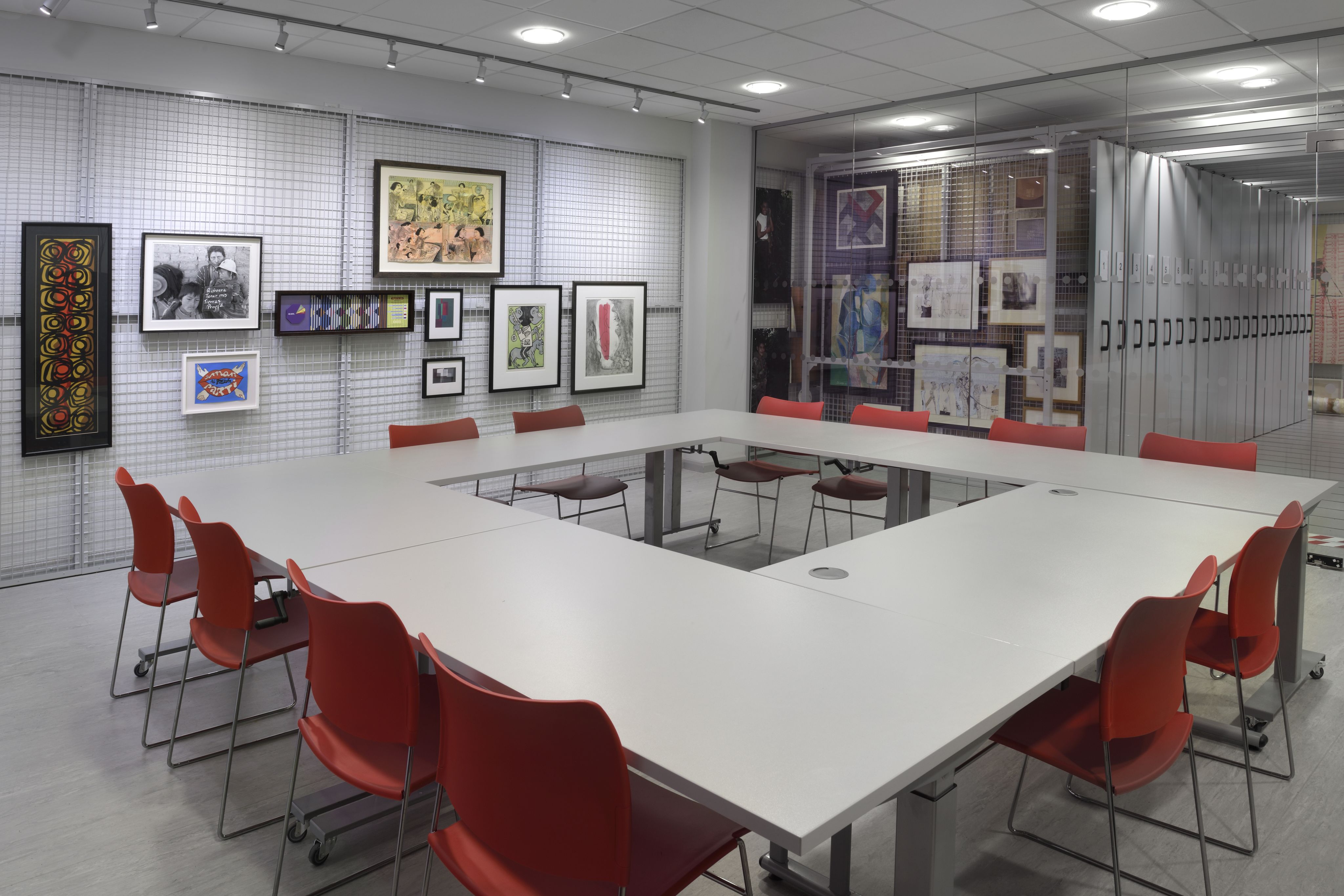
Supporting education and stimulating research
ESCALA supports the education of our students and our staff through research-led teaching and object-based learning. The collection also enriches people’s lives through art.
Lecturers from various departments work with ESCALA to deliver object-based learning sessions, where students learn different skills such as teamwork, citation and visual analysis, through the careful observation of objects. These sessions often take place in our purpose-designed Teaching and Research space in the Constable Building, a multi-functional climate-controlled space where students and staff are able to navigate our storage facilities and display artwork to be used in classes.
ESCALA Research Fellow Dr Lisa Blackmore, Senior Lecturer from the School of Philosophy, History and Interdisciplinary Studies (PHAIS), threads items from the collection into her teaching and uses the collection’s themes to explore the relationship between people, art and ecosystems. Dr Blackmore’s further research asks how humans relate to rivers through the analysis of infrastructures, sound and installation art, poetry and sensory connections to water, using ESCALA as a primary source.
In 2019, her ongoing work led to Gone to Ground, an exhibition which she curated, and which sought to open human senses to the earth’s pulsing presence through artworks from Latin America. Students from our BA in Art History wrote the catalogue which accompanied the exhibition and created Gone to Ground: Mapping Terrains, a related exhibition which was curated by 3rd year Curatorial Studies student Bia Neviani Coslovsky.
"The Collection means so much to me because I have seen it grow from strength to strength, with one of the highlights being the opening of the Teaching and Research Space in 2015. The ESCALA staff worked so closely and passionately to bring that space to life to give ESCALA a permanent home on campus. I feel such immense pride when I walk into that room and see 30 years of work by staff, students, and artists from Latin America housed in one place and available for teaching, research, and enjoyment.
I've been the Curator at ESCALA since 2018 and previously I was the Collections Assistant from 2007-2016. Funnily, art from Latin America wasn't my specialty prior to working with the Collection, but I had worked in museums for several years in Canada before I joined ESCALA in 2007. My love and knowledge of art from Latin America grew from working with the collection for so many years.
My relationship with ESCALA is one of collaboration and partnership. ESCALA provides the infrastructure and support necessary for the collection's preservation, research, and public engagement. Together, we work towards fostering a deeper understanding and appreciation of Latin American art, contributing to the discourse on cultural diversity and artistic expression. It's a relationship that allows the collection to thrive and resonate with audiences here at Essex and the wider community.”
Dr Sarah Demelo
Curator (ESCALA, University Art and Special Collections)


The future of ESCALA
Through its collaborative nature, ESCALA continues to grow and acquire new art which further develops its collection themes, including the environment, human rights and indigenous America, and uncovers new opportunities for the collection to contribute to discussions about cultural diversity and decolonising museums.
Collecting Art from Latin America (AR915) is an award-winning postgraduate module developed by ESCALA and delivered in collaboration with the School of Philosophical, Historical, and Interdisciplinary Studies. Students learn how museums acquire artworks and use this knowledge to research and propose the acquisition of an artwork for the Collection. Students then present an acquisitions proposal to an expert panel formed of current and former ESCALA Directors, Emeritus Professors, Curators at Essex, and lecturers from across the University.
Most recently, MA Curating (2023) student, Santiago Valencia Parra, successfully proposed the acquisition of the artwork Hombre Misak disfrazado de La Señorita (2017) by Julieth Morales, a Misak artist from Colombia. The panel praised the student’s proposal for its pedagogical value, inviting a myriad of questions about the power of ritual, textiles as a technology, gendered roles and cross-cultural exchanges to current debates about decolonising curricula through the testimony of indigenous artists.
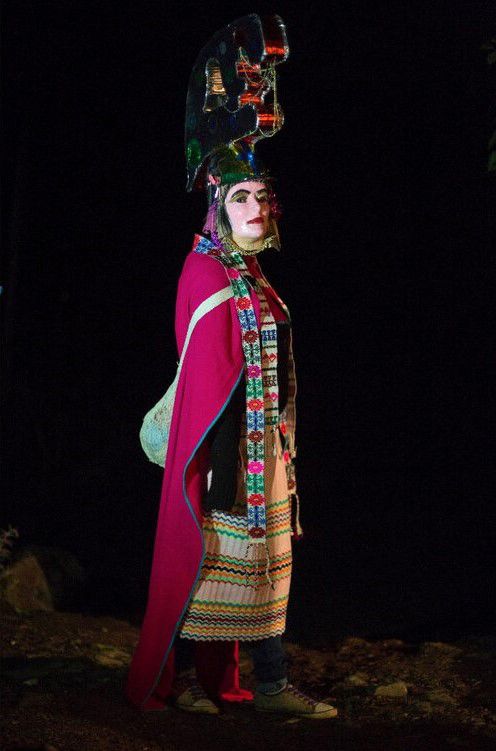
Find out more
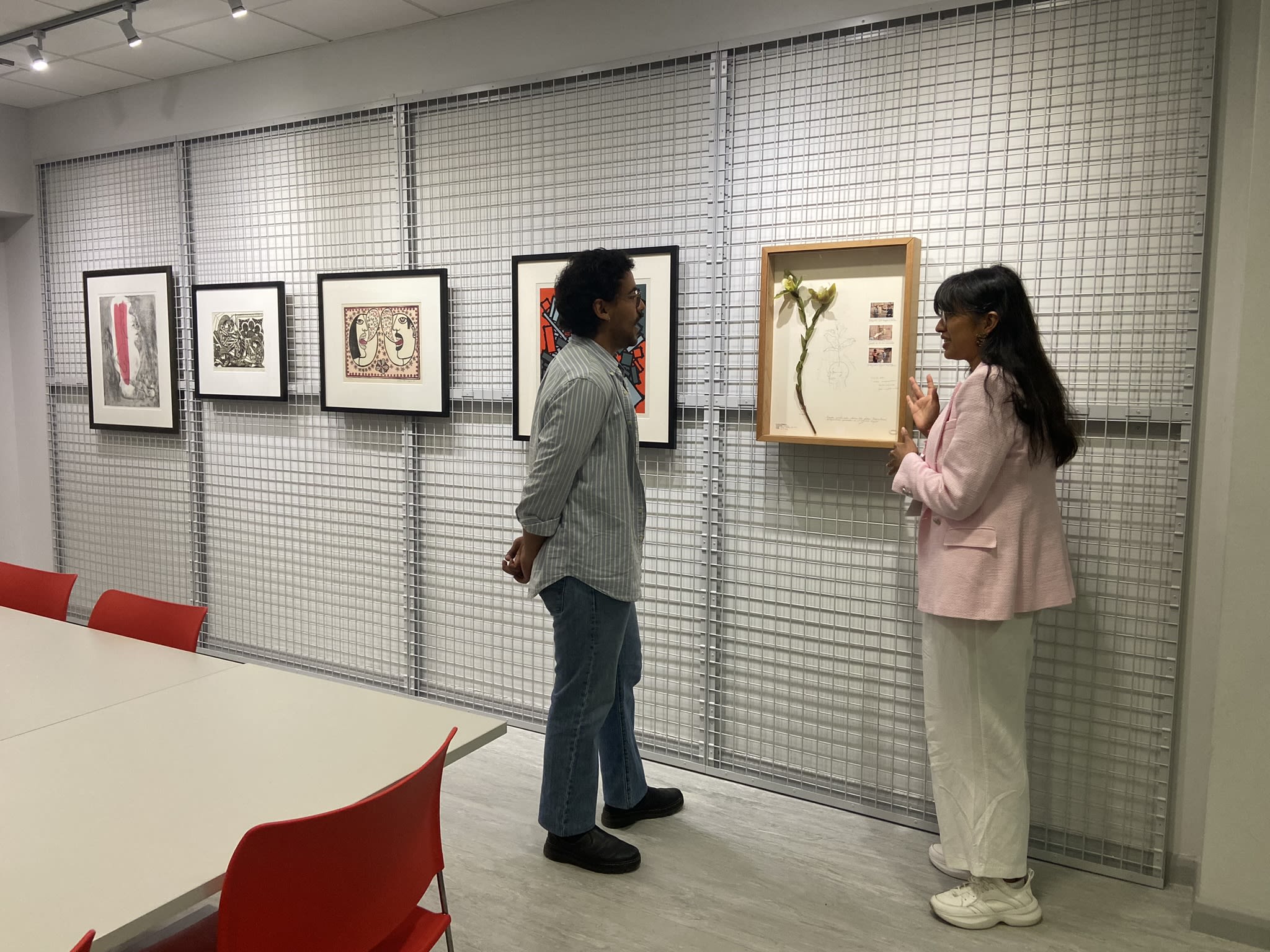
Discover more about ESCALA
Over 750 artworks in a broad range of media dating from the1960s to the present.

Experience Trinta/Treinta/Thirty
Join us in celebrating the different voices that have nurtured and promoted the growth of ESCALA.

Study Art History at Essex
Examine the evolution of artistic movements, styles, and techniques at our Colchester Campus.

Sixty Stories
We’re celebrating 60 years of making change happen. 60 years of boldness and bravery from our students past and present. 60 years of creating change.


